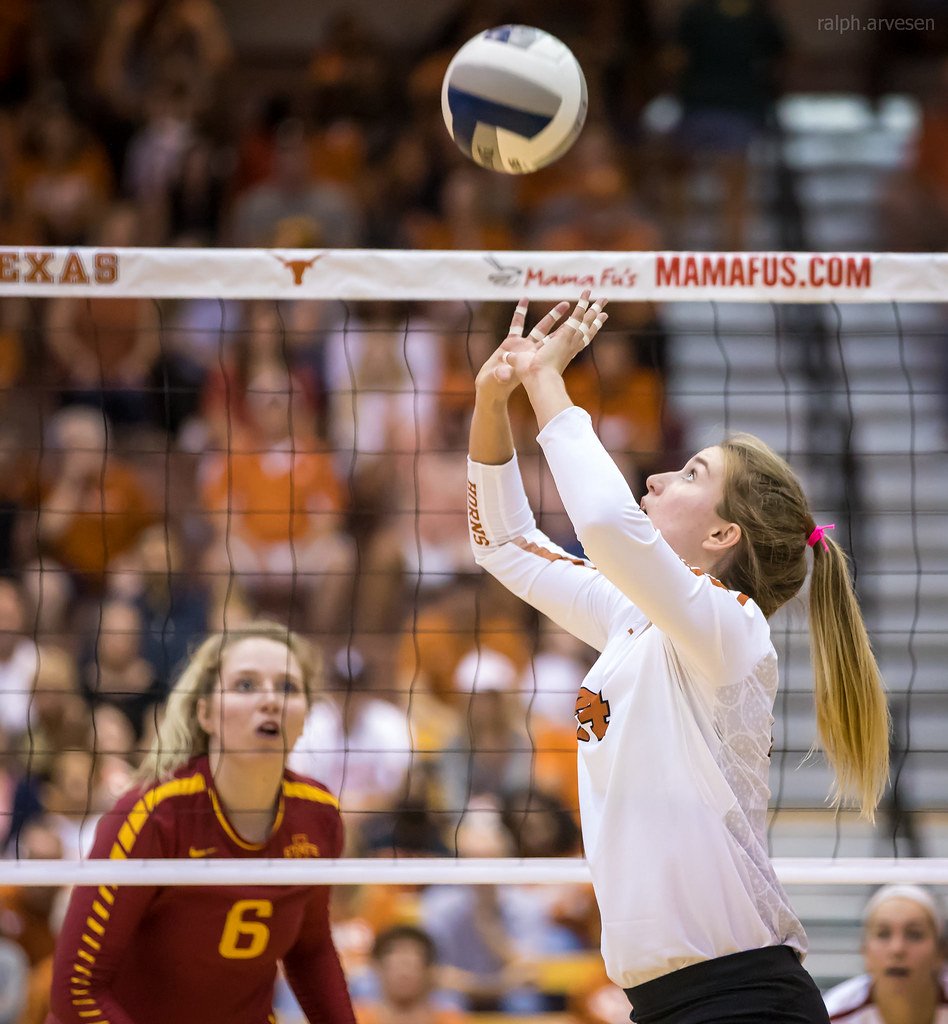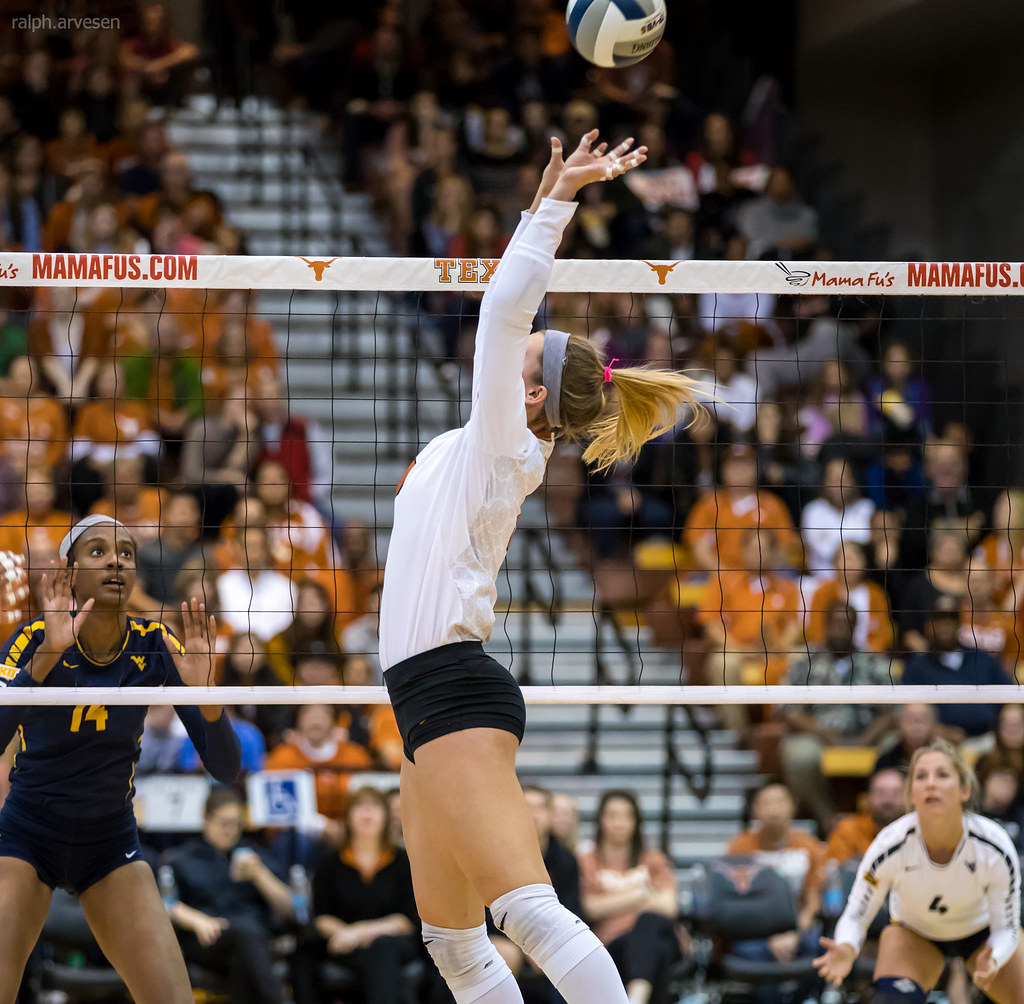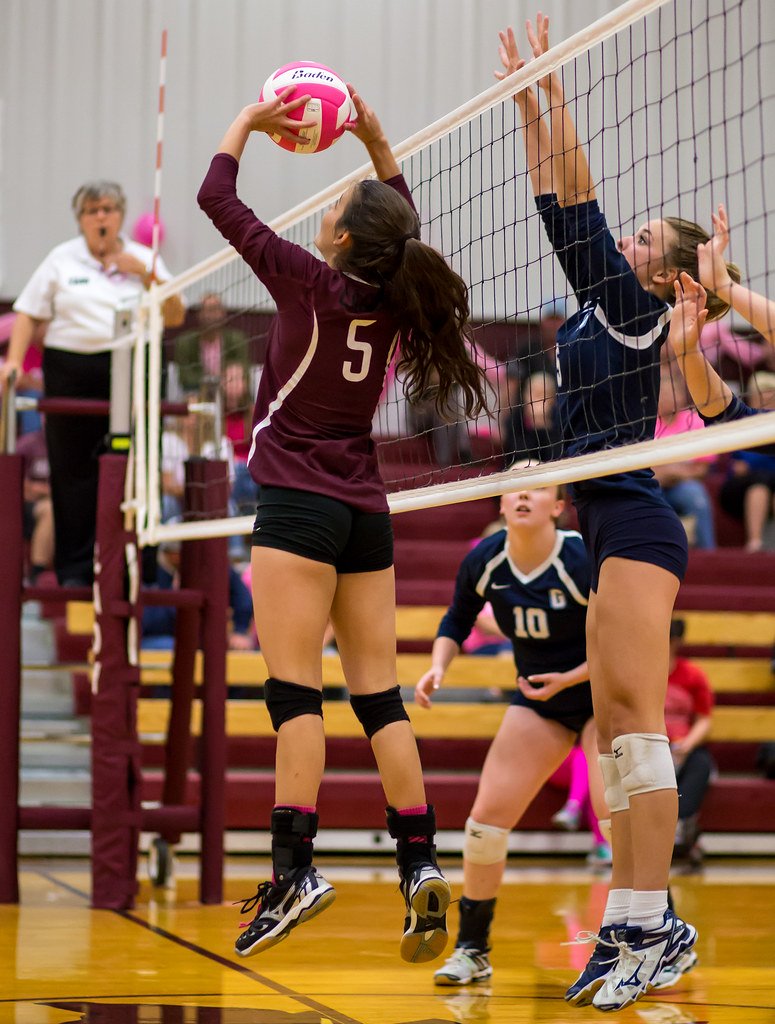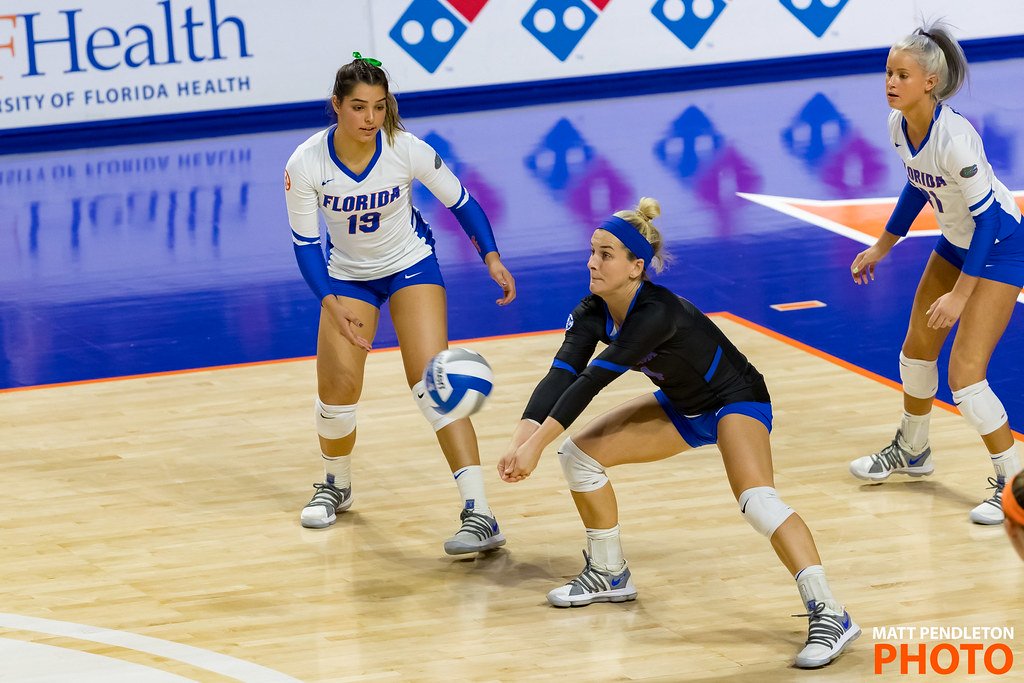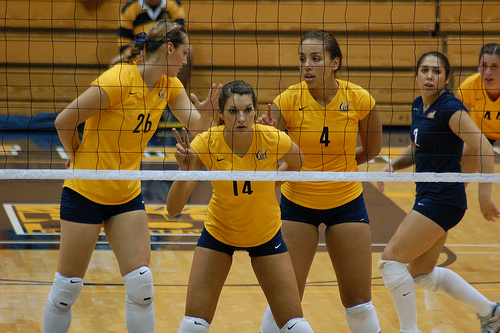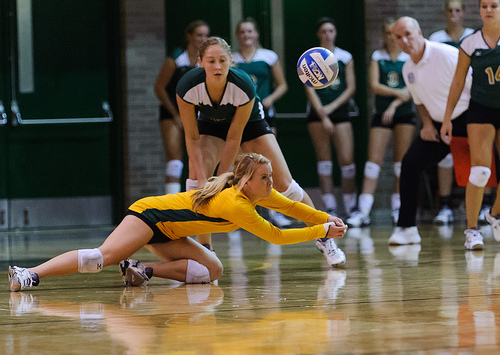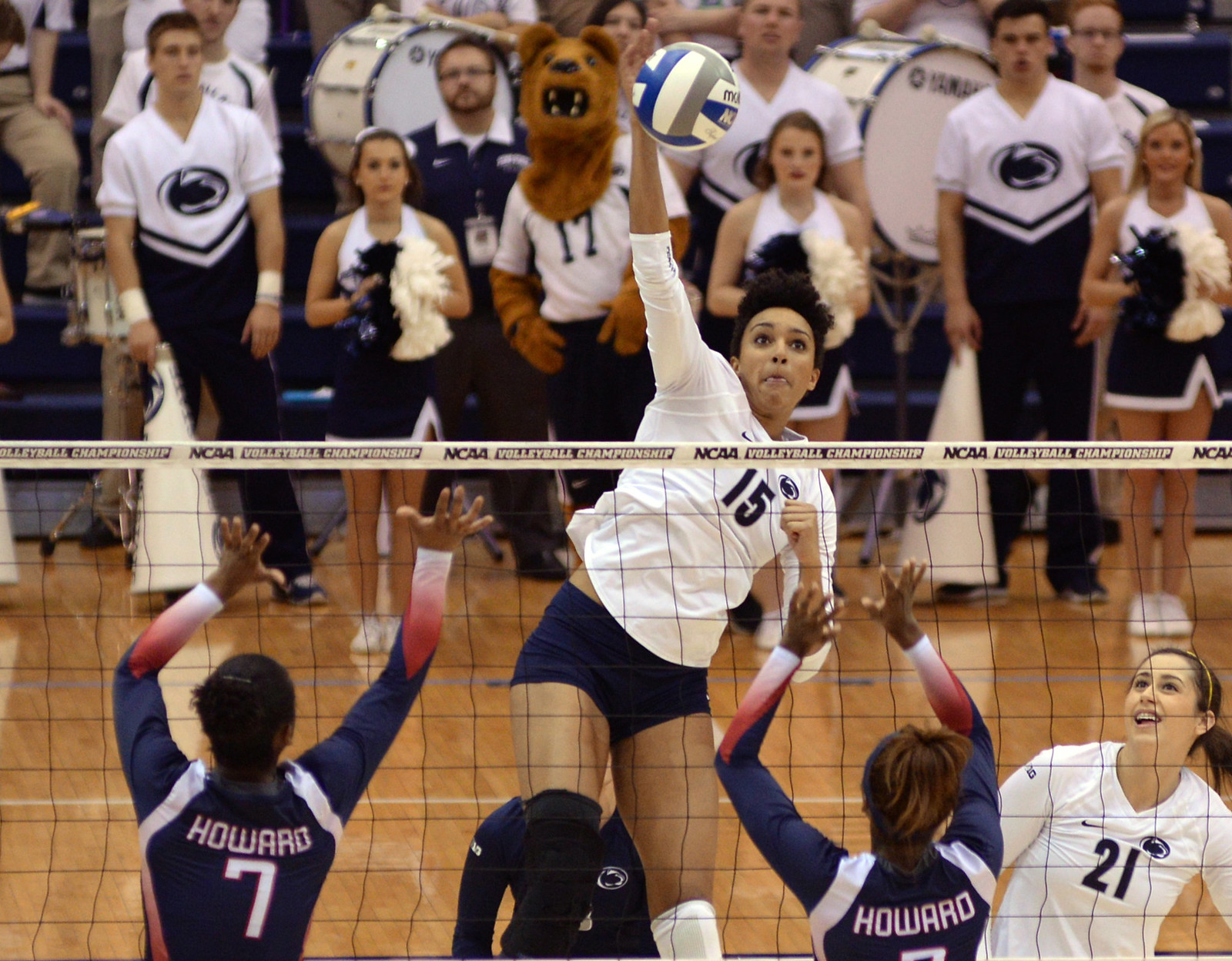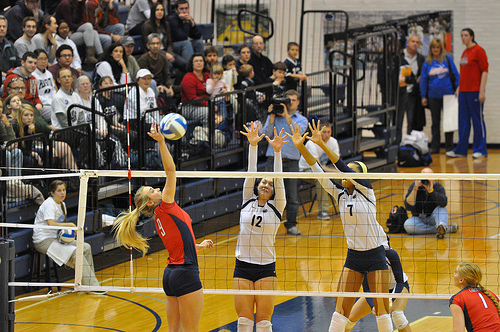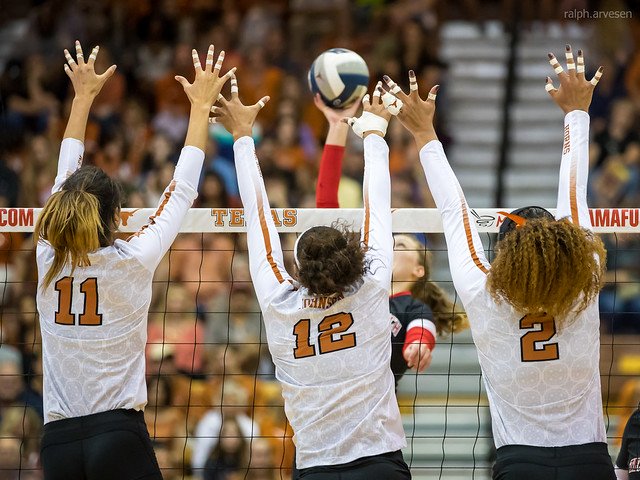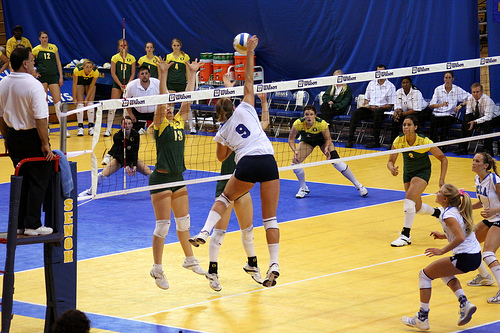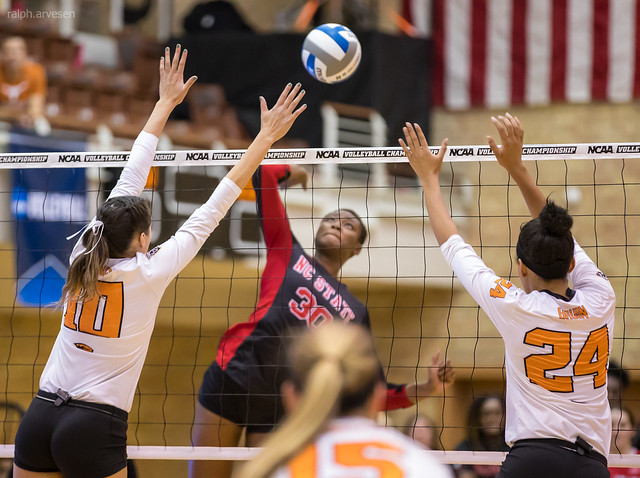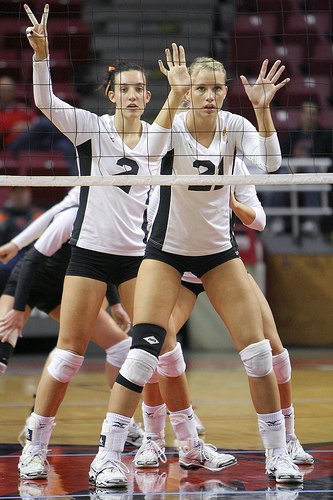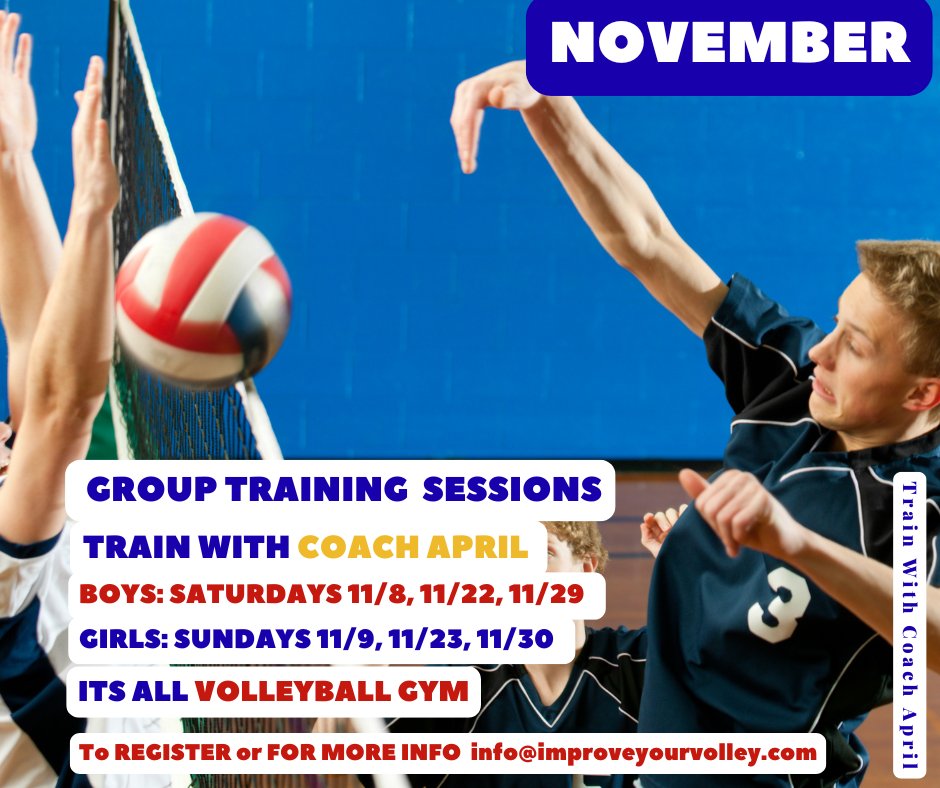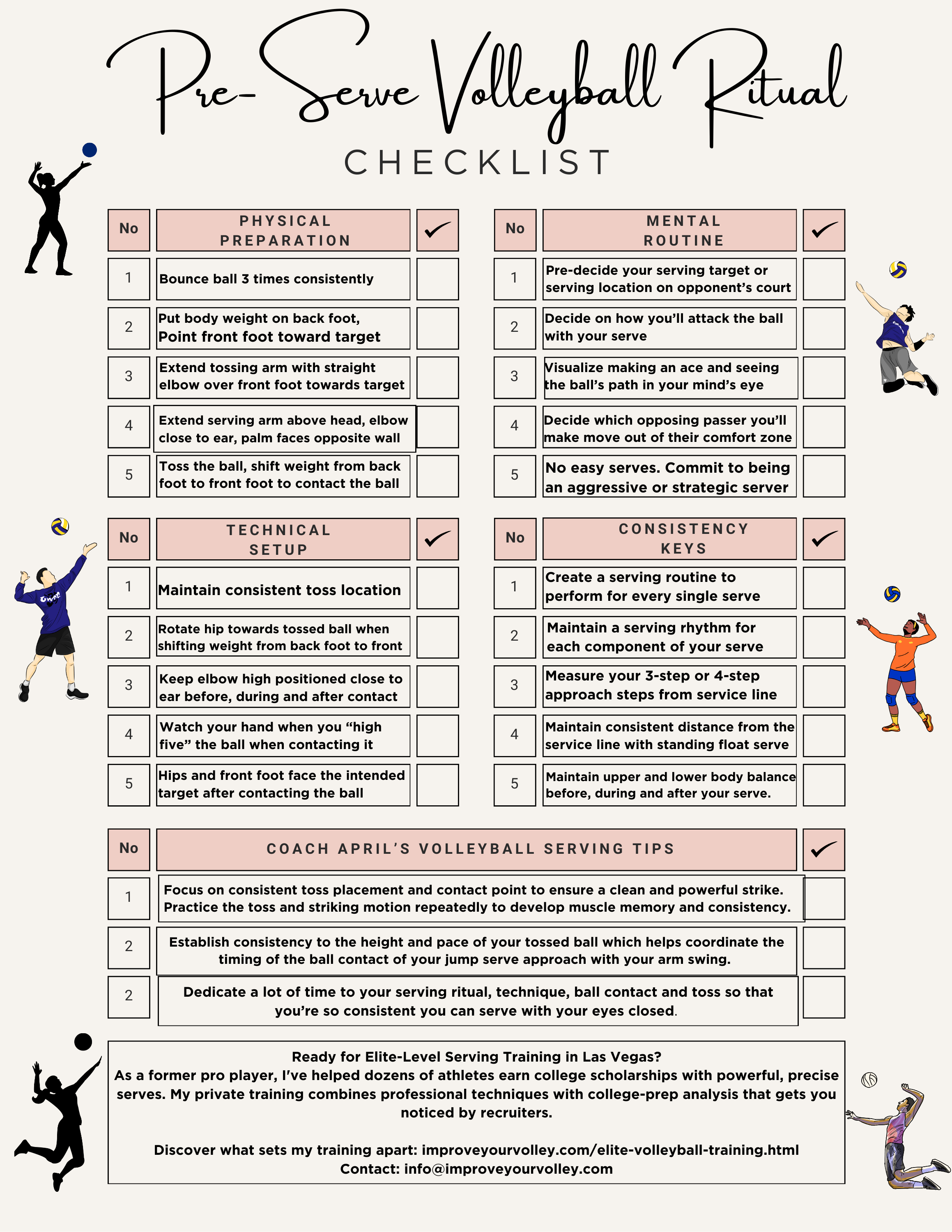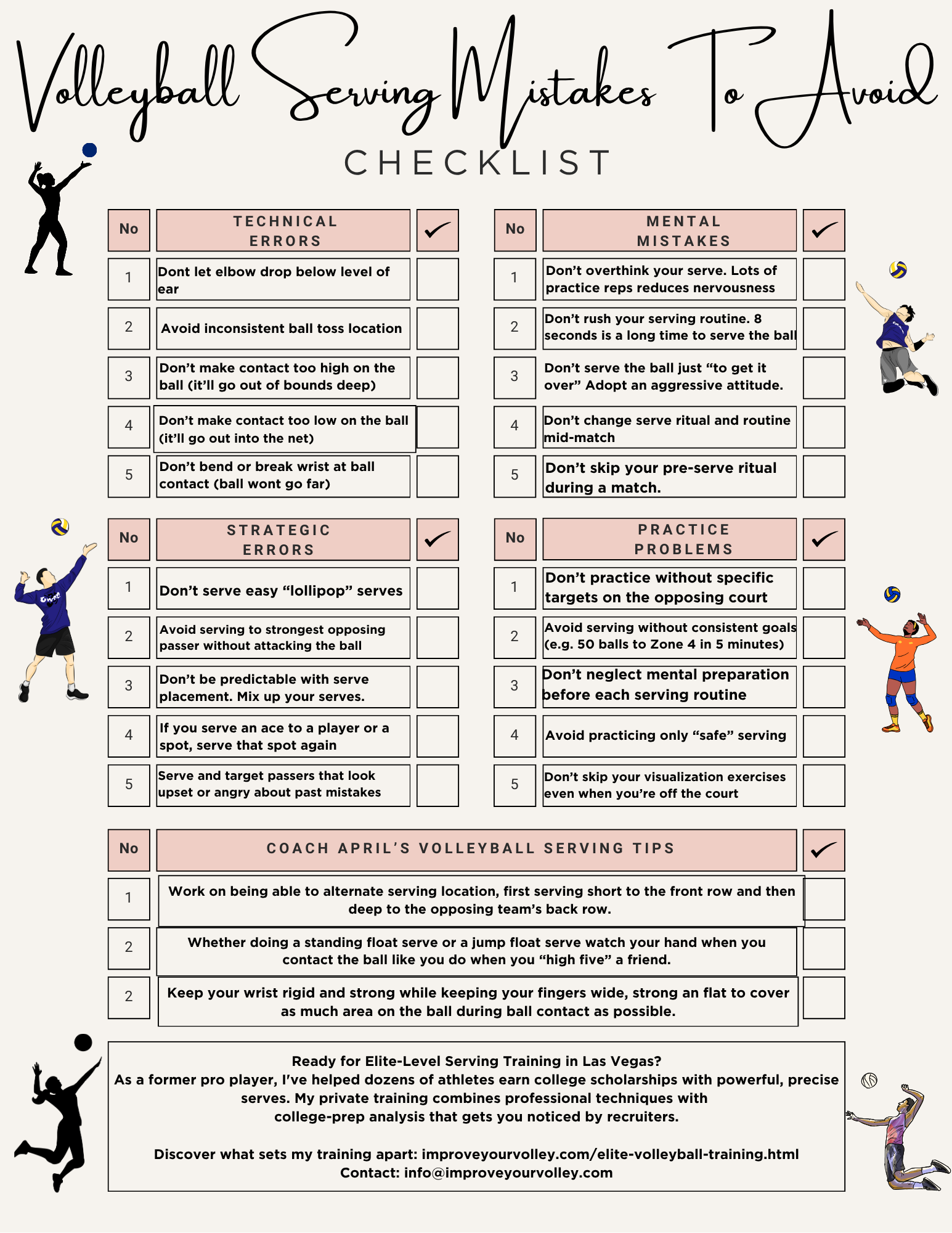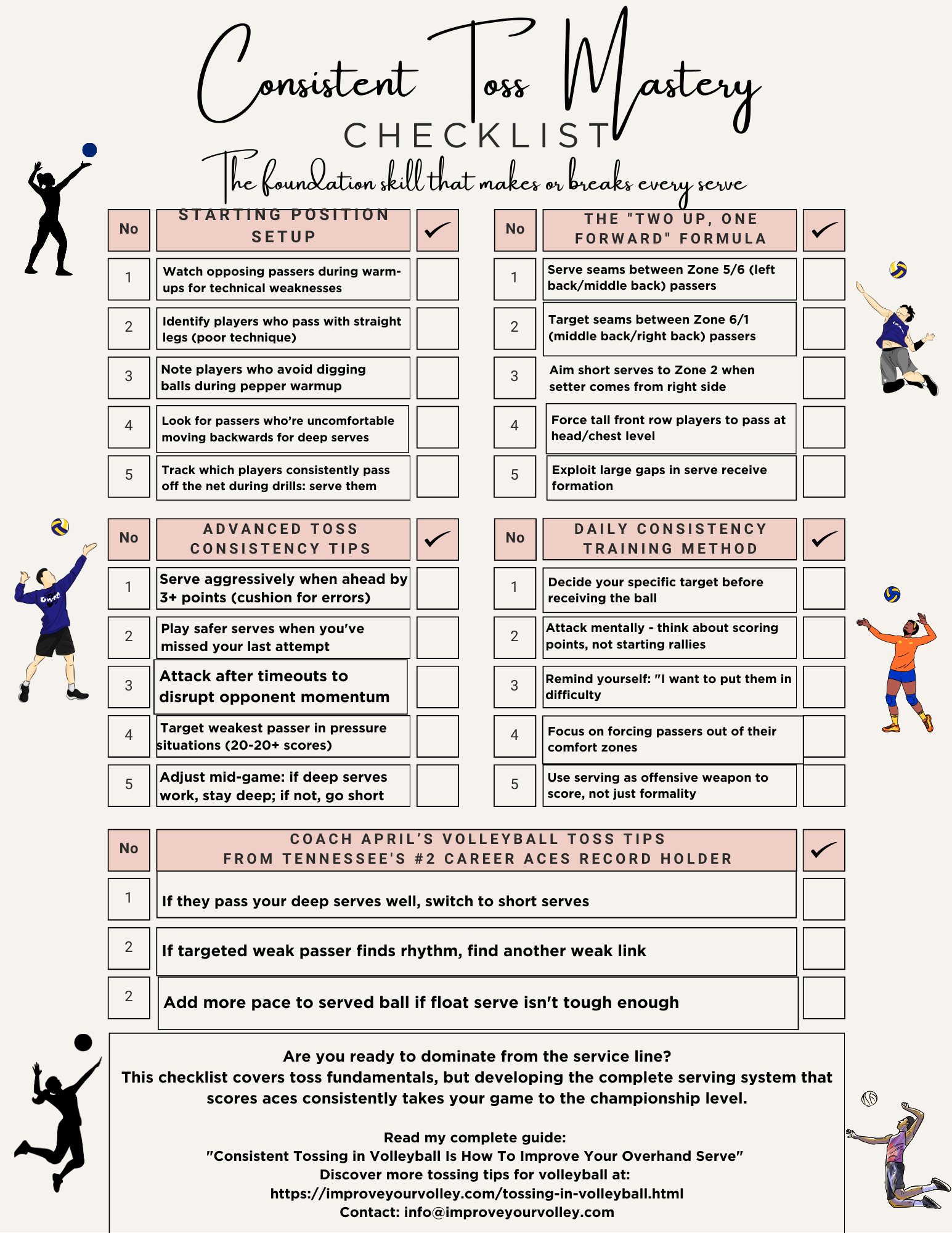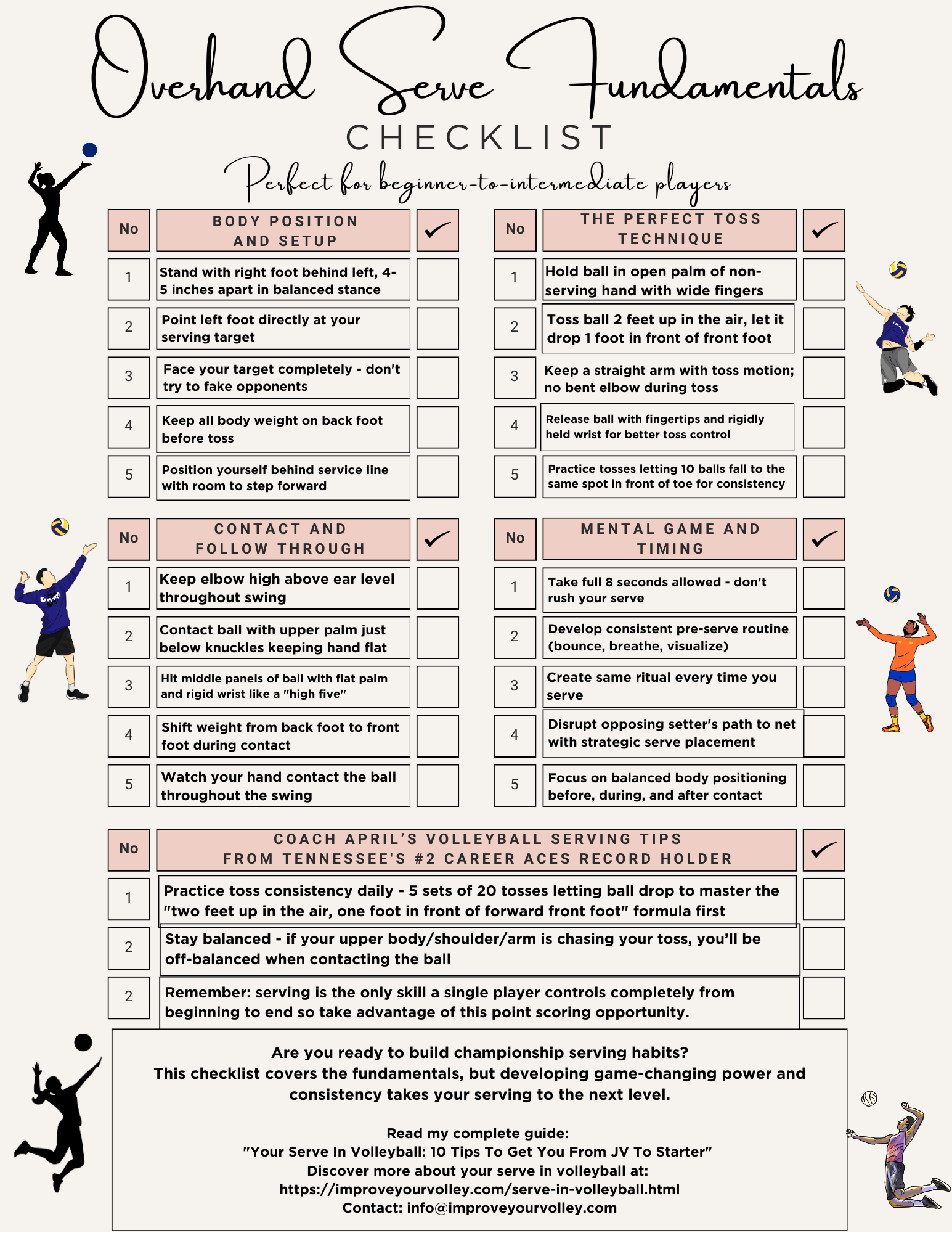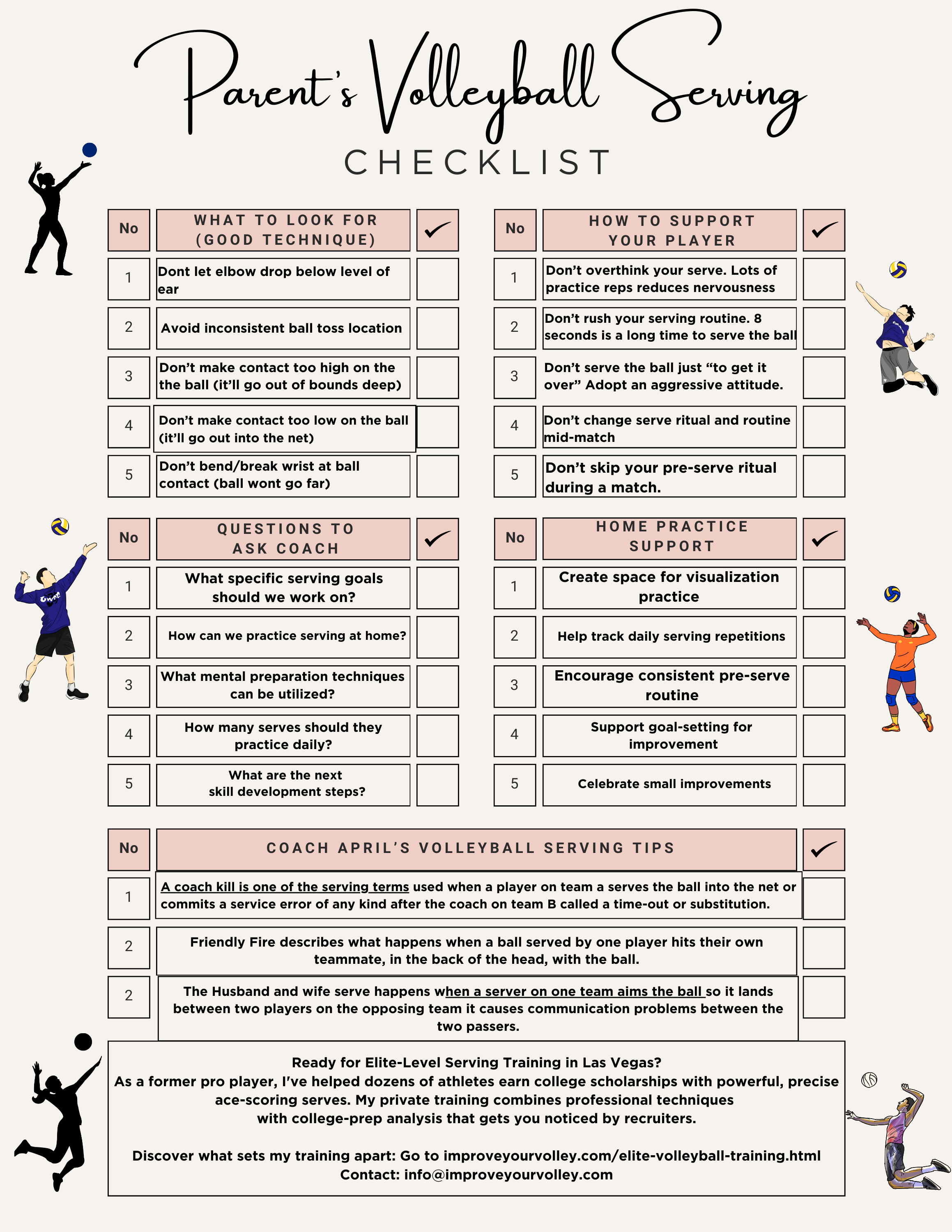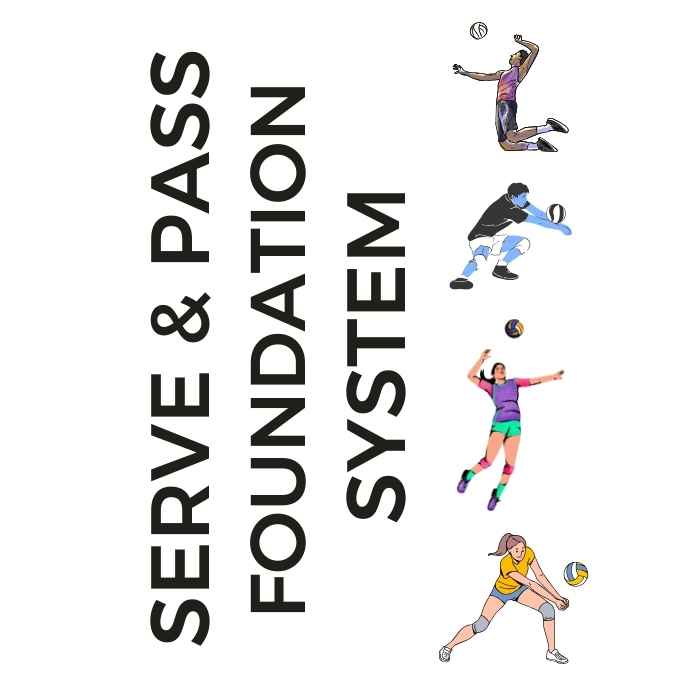
Serve + Pass Foundation System: The Complete Skills Arsenal The two-skill mastery system that transforms inconsistent players into the athletes coaches build their lineups around. Stop Struggling With The Two Most Important Skills In Volleyball!
- Improve Your Volleyball with Coach April
- Words Used in Volleyball
- Court Volleyball Positions
Understanding Important Court Volleyball Positions And Who Plays Them
There are seven primary playing positions in volleyball, the setter, outside hitter, the opposite, the middle blocker, DS, libero and serving specialist.
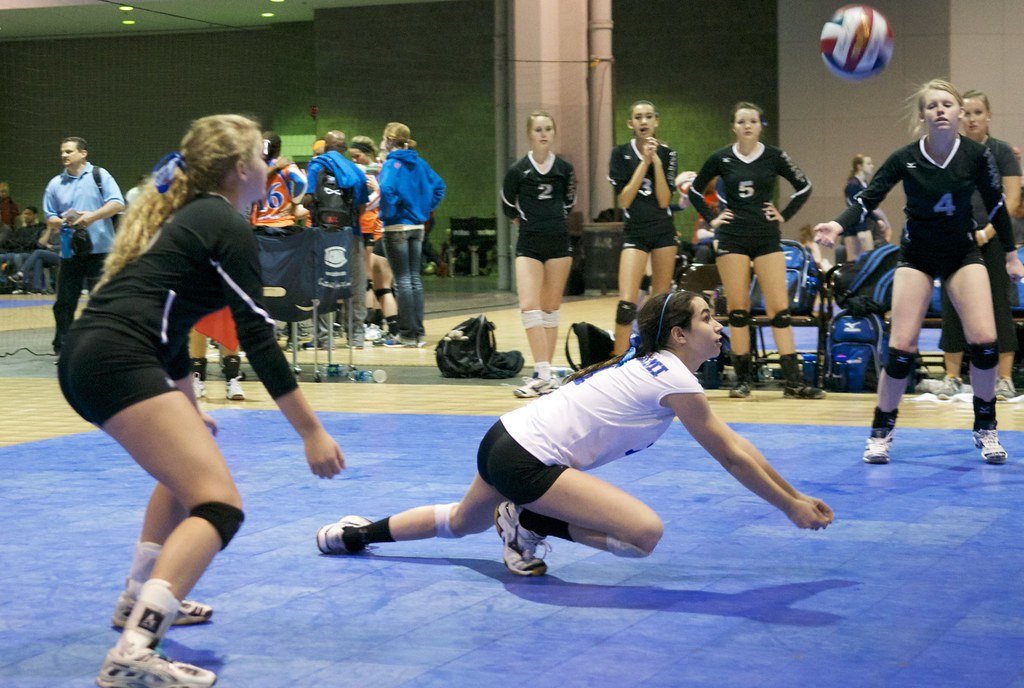 Court Volleyball Positions: The volleyball defensive player known as the libero specializes in playing defense in any of the three zones in the back court. (Denis Wright)
Court Volleyball Positions: The volleyball defensive player known as the libero specializes in playing defense in any of the three zones in the back court. (Denis Wright)Article At A Glance
- Discover the roles and responsibilities of the setter, responsible for exploiting the weaknesses in the opponent's defense and setting up advantageous play scenarios.
- Uncover the importance of the middle blocker who is responsible for decisively blocking incoming attacks and maintaining a strong, defensive front.
- Learn about the outside hitter, the proverbial "cannon" of the team, responsible for scoring with powerful spikes and often responsible for cleaning up imperfect sets
- Get a better understanding of the opposite hitter who is entrusted with both offensive and defensive roles; deter opposing team's strikes and attack from the right side of the court.
- Peep the role of libero, a player known for their agility and defensive prowess, resembling a guardian angel for the team. They are easily identifiable due to their different colored jersey.
Understand where the positions on the court each of these players usually play in, where and what they specialize in and what their roles and responsibilities are.
Which court volleyball positions do you specialize in? There are seven important player positions on a team that players usually specialize in
- setter
- middle blocker
- outside hitter
- opposite hitter
- libero
- defensive specialist
- serving specialist
Let em explain the role that each of them plays so you can decide which one is best for you.
Court Volleyball Positions -
The Setter Position in Volleyball
A setter is typically positioned in the right back spot - position 1, but can move to other areas based on tactical requirements.
The setter’s job is to set the ball for the team’s attackers, making them (the setter) critical in initiating offensive plays that help their team score.
The volleyball setter's goal is to exploit the weaknesses in the opposing team's block and defense.
The setter's job is to outsmart the opposing team's block so that her hitters hit the ball with the least number of opposing blockers trying to block their spike attempts.
I think the setter volleyball position is one of the hardest positions to play because they have to remember what works and what doesn't.
Court Volleyball Positions -
The Libero Position in Volleyball
What's a libero and why does the libero wear a different color jersey?
A libero is a defensive specialist, often the most agile player on the team. This player excels in receiving serves by passing the ball and digging, akin to a guardian angel for the team.
The libero wears a different colored jersey to make them easily identifiable, as they have unique substitution rules.
Court Volleyball Positions: Why Does A Libero Wear A Different Color Jersey?
If you were curious as to why one of the players always has a different color jersey than their teammates, that's to identify them to the referee, as to which player is the libero.
The libero's volleyball jersey is always in contrasting colors to that of her teammates since she only plays in the back row.
The libero volleyball player goes in and out of the game without being substituted in so to differentiate them from the other players they wear a contrasting color jersey.
Position 6, located at the back center of the court, is usually filled by the defensive specialist or the libero as they are best suited for receiving serves and making digs.
Is The Libero Volleyball Position One of The Best Court Volleyball Positions To Play?
If you're one of the shortest or the quickest players on your team, the libero volleyball position is one of the good volleyball positions on the court which could be a great option for you to aspire to play.
What does it take to make a good libero?
You can really make a huge difference on your team in this position especially if you have
- great passing skills
- play great defense
- have a bulldog spirit in regards to keeping balls off the floor
- possess great communication and leadership skills
Also being a starting libero guarantees you plenty of playing time during each game.
Court Volleyball Positions -
The Middle Blocker Position in Volleyball
How Do You Become A Good Middle Blocker in Volleyball?
Following a pattern called "Ball-Setter-Ball-Hitter" the middle blocker's job is to track the ball from the passer to the setter for clues as to which one of the hitters the setter's going to set.
Once the middle figures it out, they track the ball that's been set, by moving laterally along the net with a set number of block steps to position themselves in front of the hitter and then time their block jump in a way to stop whatever attack hit is coming.
The player in the middle blocker volleyball position is
- flanked by her two outside blockers who are ready to help out with blocking responsibilities in the middle
- ready to travel outside to just inside the antenna to prevent an attack hit by an opposing hitter
- ready to come off the net to play defense on the ten foot line where they're ready to pick up any tips or sharp cross court attacks
Court Volleyball Positions -
Outside Hitter Position
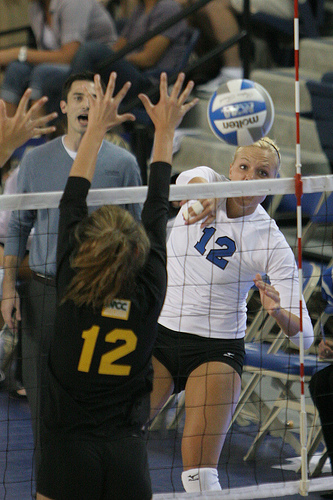 Court Volleyball Positions - Left sides are called "cannons" because their offensive position is the furthest away from the setter, but they are often the hardest hitters on the team who score the most.
Court Volleyball Positions - Left sides are called "cannons" because their offensive position is the furthest away from the setter, but they are often the hardest hitters on the team who score the most.Left sides are called the "cannons" because even though they play their offensive position the furthest away from the setter, they are quite often the hardest hitters on the team.
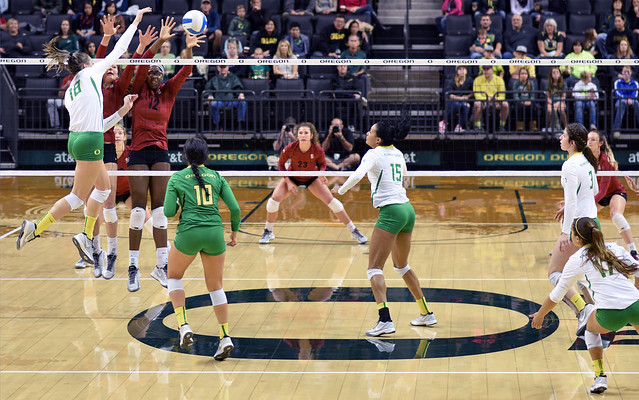 Court Volleyball Positions - The "outside hitter," pin hitter or "the cannon" gets set the ball often usually as the third and last contact allowed for a team. (Al Case)
Court Volleyball Positions - The "outside hitter," pin hitter or "the cannon" gets set the ball often usually as the third and last contact allowed for a team. (Al Case)For some, left side hitters are referred to as "vacuum cleaners" because its their job to clean up all the trash.
The “O” in “OH” stands for “Outside,” so “OH” refers to an “Outside Hitter." This player hits and blocks on the front left side of the court.
Court Volleyball Positions -
Opposite Hitter
First, because the right side hitter becomes the right side blocker when her team is on defense, she is lined up to block the left side hitter of the opposite team.
Most Frequently Asked Questions About Court Volleyball Positions
Now let's dig into some of the most frequently asked questions when understanding court volleyball positions.
1. What are the 7 playing positions on the volleyball court?
There are generally seven positions on the volleyball court; setter, outside hitter, middle blocker, opposite hitter, defensive specialist, libero, and serving specialist. Each player position has unique roles which play a pivotal part in the game.
2. What is position 4 in volleyball and who plays in it?
Position 4, also known as Zone 4, is typically occupied by the outside hitter. They are often involved in both offensive and defensive plays and are known for their powerful hits.
3. What is the difference between my court position and my playing position?
Your court position refers to your specific spot on the court, while your playing position refers to the role you play on the team, such as setter, middle blocker or libero.
4. What's a libero and why does the libero wear a different color jersey?
A libero is a player who specializes in defensive skills, specifically digging and passing. They wear a different colored jersey to distinguish themselves as they have unique substitution rules.
5. What is position 6 in volleyball and who plays in it?
Position 6 is situated at the back of the court, right in the center. The player in this position is usually the defensive specialist, often the Libero, who excels in receiving serves and digging.
6. What does the O stand for in the abbreviation "OH"?
The "O" in "OH" stands for "Outside". So, "OH" refers to an "Outside Hitter", a player who hits and blocks on the front left side of the court.
7. What is a setter and where do they usually play on the court?
A setter is a player who sets the ball for the team's attackers. They usually play on the rightback spot - 1 but can switch to multiple positions on the court based on the tactical situation of the game. A team's offensive play often begins with the setter.
Remember, understanding the court positions allows players to make quick decisions, anticipate opponent moves and respond effectively.
Do You Follow Me on Pinterest?
Follow me on Pinterest Volleybragswag to improve your game even faster!
I share alot of individual, partner and easy-to-do volleyball serving drills we do in class with my followers.
Many of these volleyball practice drills you can do at home by yourself or try at your next practice with your teammates.
If you're a B team or JV player trying to make varsity next year...your goal should be to complete 1000 reps a day of at least three of the basic skills on your own...volleyball passing, serving and setting should be at the top of the list.
If your athlete struggles with consistent serve receive, gets subbed out, or is overlooked for playing time—this is the fix you’ve been looking for.

Struggling with passing consistency?
I help talented passers tired of getting pulled from games because of inconsistent serve receive skills BUILD passing confidence without expensive private lessons using the same 3-step system that's helped dozens of my athletes get recruited.
Download my eBook for $17.99 and start building the passing confidence that keeps you on the court—and gets you seen by college coaches.
From Lady Vol to Legend: Coach April Produces Powerful Passionate Players...is that you?
What Are You Looking For?
Click to Download Your Pre Serving Ritual Mastery Checklist pdf:
🎯Volleyball Pre Serving Ritual Guide -
Players! Learn How To Transform Your Serve from Weak to Weapon
Click to Download Your Parent's Volleyball Serving Checklist pdf
🎯Parent's Volleyball Serving Checklist Guide
Parents! Help Your Player Develop Championship Serves (Even If You've Never Played)

Hi there!
Thanks for stopping by. Hope you learned something today that will help you reach your volleyball goals.
Be sure to subscribe to my email newsletter so you can learn more each week!
Stay strong! Stay motivated!
-Coach April

SUSCRIBE to my email newsletter below!
 Click to learn more about the weekly volleyball classes and clinics or email info@imrpoveyourvolley.com for information
Click to learn more about the weekly volleyball classes and clinics or email info@imrpoveyourvolley.com for informationCongratulations to my seven Boys-18s Vegas Volley club players who played in two state championship finals yesterday, the 3A and 5A State champinship finals at Sunrise Mountain High School.
TOURNAMENT CHAMPIONS!
A-1 Vegas Volley VBC
In It To Win It Tournament
May 2 - 4, 2025 Tournament
Gold Medalists
18s Premier Division
Vegas Volleyball's Unsung Heroes: Celebrating Moms with Peace Love Volleyball Shirts
Ready to energize your volleyball mom journey?
Subscribe to my 'Producing Powerful Passionate Peaceful Players' email list above on ImproveYourVolley.com.
You'll receive energy-boosting tips, exclusive insights from me, Coach April Chapple on maintaining momentum in volleyball.
Let's power up the Vegas volleyball scene together!
Recent Articles
-
How To Practice Volleyball Alone: Solo Drills That Build Real Skills
Dec 26, 25 06:20 PM
Learn how to practice volleyball alone with wall drills, progressions and weekly one-player training schedules to improve passing, setting, serving & hitting. -
6 Volleyball Setting Checklists For Players With College Prep Goals
Dec 24, 25 06:18 PM
6 volleyball setting checklists that build elite setters. Master hand positioning, footwork, set types, back setting & jump setting. Includes at-home drills. -
The Volleyball Checklist: Skill Development Systems That Get Results
Dec 24, 25 02:22 AM
Master serving, passing and other basic skills with a step-by-step volleyball checklist from a Tennessee Hall of Famer who trains college-recruited athletes.

